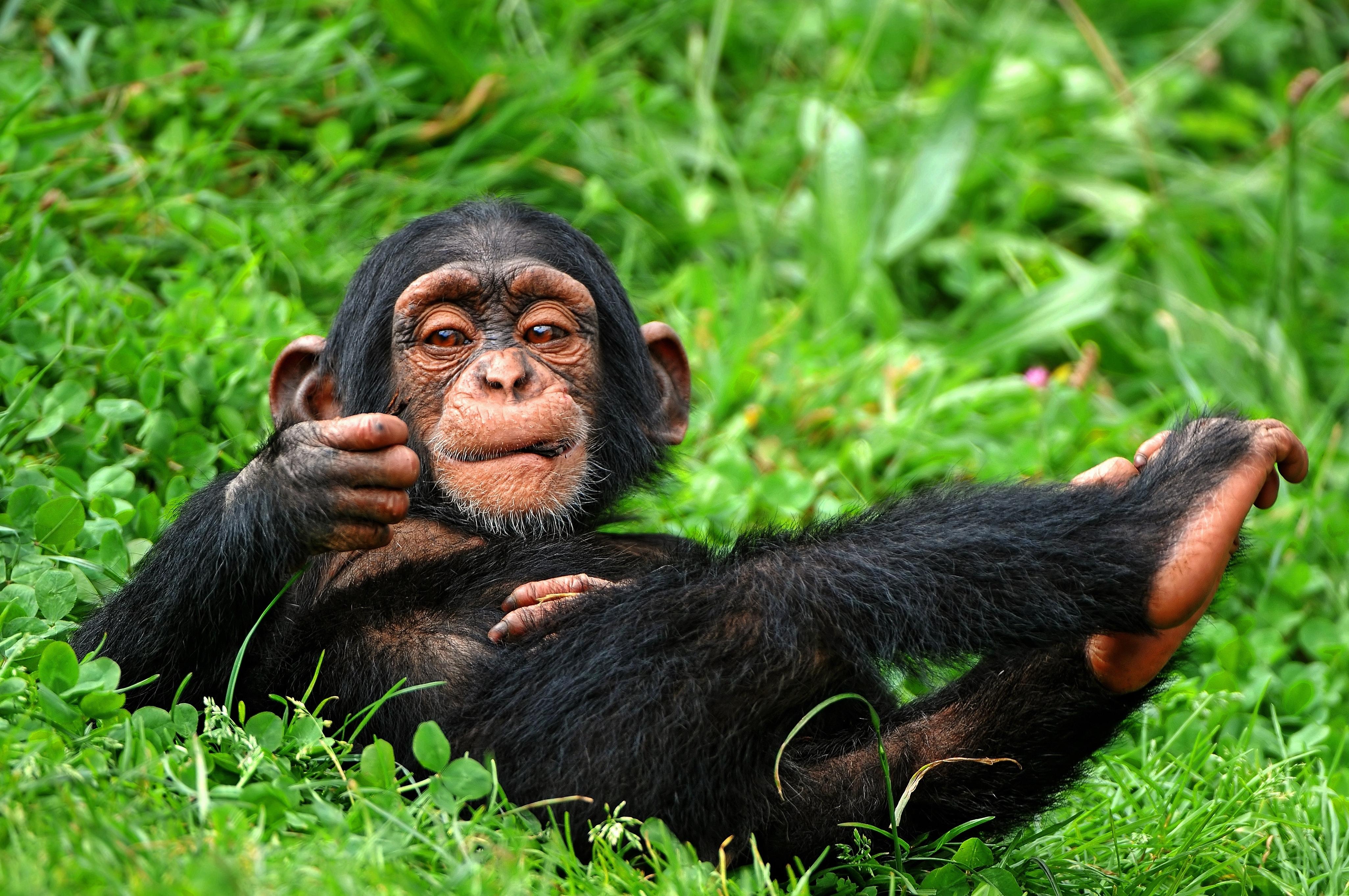
A comparison of the entire genome, however, indicates that segments of DNA have also been deleted, duplicated over and over, or inserted from one part of the genome into another. The 1.2% chimp-human distinction, for example, involves a measurement of only substitutions in the base building blocks of those genes that chimpanzees and humans share. Geneticists have come up with a variety of ways of calculating the percentages, which give different impressions about how similar chimpanzees and humans are.

How do the monkeys stack up? All of the great apes and humans differ from rhesus monkeys, for example, by about 7% in their DNA. A difference of 3.1% distinguishes us and the African apes from the Asian great ape, the orangutan. Most importantly, chimpanzees, bonobos, and humans all show this same amount of difference from gorillas. The DNA difference with gorillas, another of the African apes, is about 1.6%. The bonobo ( Pan paniscus), which is the close cousin of chimpanzees ( Pan troglodytes), differs from humans to the same degree. While the genetic difference between individual humans today is minuscule – about 0.1%, on average – study of the same aspects of the chimpanzee genome indicates a difference of about 1.2%. The amount of difference in DNA is a test of the difference between one species and another – and thus how closely or distantly related they are.

DNA shapes how an organism grows up and the physiology of its blood, bone, and brains.ĭNA is thus especially important in the study of evolution. It also consists of the molecular codes that regulate the output of genes – that is, the timing and degree of protein-making. It consists of genes, which are the molecular codes for proteins – the building blocks of our tissues and their functions. DNA, or deoxyribonucleic acid, is the molecule that makes up an organism’s genome in the nucleus of every cell. The same is true for the relationships among organisms. Through news accounts and crime stories, we’re all familiar with the fact that the DNA in our cells reflects each individual’s unique identity and how closely related we are to one another. Science, Religion, Evolution and Creationism: Primer.Members Thoughts on Science, Religion & Human Origins (video).Teaching Evolution through Human Examples.
#Chimpanzee and monkey archive
Digital Archive of Ungulate and Carnivore Dentition.Adventures in the Rift Valley: Interactive.Leaves, fruit, nuts, roots, seeds, insects and occasionally meat.Smithsonian National Museum of Natural History The Smithsonian Institution's Human Origins Program Main Menu Head to their enclosure to hear the keeper talk and see our loveable troop at feeding time.įollow this link for information on our keeper talks and animal feeding times.Īcross 21 African countries in dense tropical rainforests The chimpanzee troop loves their newest addition, but especially big sister Capri. On 8 December 2021, Leakey gave birth to a second daughter, Mzuri. On February 3, Holly gave birth to a beautiful baby boy, named Gandali. In 2020, we were blessed to have another chimpanzee baby born at the Zoo. Dubbed the darling daughter of Rockhampton Zoo, Capri adores her chimpanzee family, the zoo keepers and, of course, visitors coming to see her. In February 2018, Alon and Leakey brought new life to the zoo when baby Capri was born. We were then fortunate to welcome another male and female, Alon and Leakey in September 2015 from the Rahmet Gan Safari Park in Israel. In 2012, he was joined by females Holly and Samantha who came to Rockhampton as part of the Australasian Species Management Program.

Chimps have a variety of skills that are passed on from generation to generation, from fishing for termites and ants, to cracking nuts with rocks and using leaves to build nests.Įight chimpanzees call Rockhampton their home.Ĭassius (or Cassie for short), one of our male chimps, was born in Coolangatta in 1971 and moved to Rockhampton Zoo in 1986. Chimpanzees are the mammal most like humans and their playful antics highlight their intelligent nature and vibrant personalities.


 0 kommentar(er)
0 kommentar(er)
